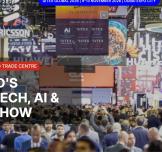You are here
Dual Mindsets for Innovation

Visual two heads….different mindsets, different thinking about innovation but working together, a duality of thinking and managing innovation going forward. We must learn to explore and exploit at the same time, both in parallel and where needed, in separate ways, or entities.
If we ‘subject’ all of our innovation thinking to go through the same process we lose so much. How can you treat incremental innovation in the same way as radical or breakthrough innovation?
You need to apply a completely different thinking and approach to the type of innovation you are thinking through. You must be prepared to abandon established thinking if it is not resolving the problems you are facing.
Let me introduce the idea of separate operating systems within the same organisation, a dual thinking. Is this possible? Let’s begin to think about it here and explore it in further posts later in the detail we would need to think of such a thing.
Firstly, the reality is that Innovation today simply disappoints
We are not achieving the impact from all our innovation endeavours as we should. There is a time to radically redesign our innovation processes, thinking and structures. We need to shift our thinking as today, innovation is providing far too many disappointing returns and we are in urgent need to find a new re-framing position of the organisation’s innovation engagement.
Innovation needs to become far more responsive and dynamic, to respond with imagination and intent of purpose. To achieve this innovation requires a greater organisational engagement than ever before. It needs mobilising differently, in radically different ways; so as to capture different opportunities in more agile, adaptive and shaping ways
If we do need to reposition our innovation activities to our corporate boards to engage with a little more, we need to offer them a compelling set of arguments on why innovation needs a fundamental rethink, a renewed focus on building the capabilities, competencies and capacities that are possible if you engage in a comprehensive innovation management.
Shifting the innovation mindset – the need for duality
I continue to be drawn to this ‘dual’ system of ambidextrous as it helps resolve one of the consistent stumbling blocks for innovation to ‘take hold’ and evolve.
Innovation is constantly fluid, always needing to be adaptive as we learn and adjust to new learning and this is constantly requiring a very change orientated approach. Often innovation comes up against a rigid system and for many “just seems not to fit”
Innovation struggles as it today is often treated differently, more often than not remaining outside the prevailing operating system.
Innovation constantly challenges against the dominant mindset within organisations, who like the idea of innovation but are mostly measured to drive efficiency and effectiveness, keeping highly focused on the short-term performance of their role, reward, advancement and present key to ongoing career success, so innovation ‘sits outside’ their domain of focus”
Something needs to change if innovation is really important.
We innovators need a new model of change, for at least eight important reasons I can initially think of:
- As innovators we aren’t simply responding to external change, we are creating change, both for customers and for our companies and markets. (inside, proactive change vs external, reactive).
- External change is far more unpredictable, in global markets new threats emerge from anywhere, at any time and often delivered in totally unexpected ways, through new business models that totally cut through and disrupt the existing positions, they can render the existing obsolete in seemingly rapid time, irrespective of the efforts to respond as they have discovered the unmet need to deliver solutions to it.
- The pace and nature of change is not slowing but is accelerating and will continue to accelerate. (increasing pace, frequency and amplitude of change). Organisations need to pick up the pace, learn to accept a greater risk, experimentation and rapid adjustment on the new knowledge flowing in to build the final outcome to the needs of the market / customer.
- Sudden evolving markets make everything needing to be ‘super’ responsive by existing players, to the sudden realisation they have missed opportunities, Many existing organisations cannot cope and alter with this demand for agility, flexibility and responsiveness. They need to (re)learn this and build it into their systems and often this realisation comes too late. Some industries have been undertaking a responsive approach, for example in their supply chain thinking. Think Zara, the Spanish clothing retailer and how it changed the game.
- As often demonstrated, most innovation has the potential to be business model innovation, which will require change. (As more innovation becomes focused on business model innovation, this will create even more change).
- We recognise that change is no longer an occasional threat but a constant companion (shift from the idea of change as a threat to developing an ongoing change capacity as a competitive advantage).
- The idea that companies can achieve a protected steady state where change won’t affect them doesn’t seem to apply anymore (long periods of stasis, or standing still are no longer possible. Must be able to change/evolve constantly).
- We need to think of change as a capability that we constantly deploy, rather than a threat we typically avoid. (Need to develop change as a capability, to build skills, reduce barriers).
We need to ask ourselves if we recognise our need to change?
How can we establish Innovation as the vital link to a process of change and strategic direction options,that lifts the debates of managing today’s business by linking it into the future and then turning this thinking into a series of plausible and coherent set of activities?
How can we focus the energy around the boardroom table on to this linking the future work to the shape and the organisation’s needs, making the growing innovation debate as strategic as it can be?
The need is for us to get thinking in ‘dual’ minds for ‘greater’ innovation delivery.
Exploitation <=> core transformation, i.e. doing what you are currently doing in a fundamentally different way
Exploration <=> strategic transformation, i.e. changing the very essence of a company
In summary
Thinking differently in dual ways, exploring and exploiting, to establish distinct types of transformation efforts, and innovation initiatives are important.
So this kicks starts our thinking, there is more to come on this dual thinking as it can transform the way we treat innovation and that alone can transform its position inside the organisation today and yield a more positive contribution and recognition.

































































EgyptInnovate site is not responsible for the content of the comments